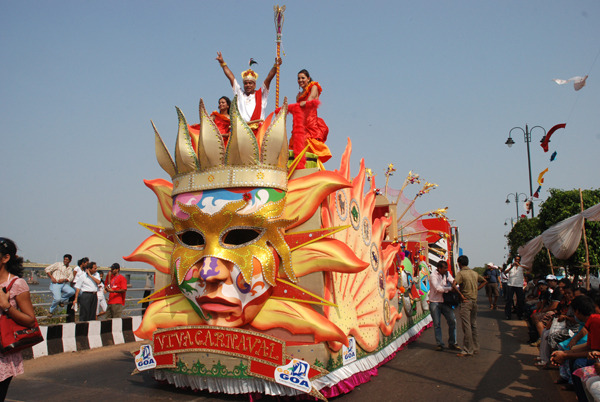Mardi Gras Around The World Slideshow
Nice: Carnaval
In France, over one million visitors attend the two-week celebrations off the Nice Carnaval.
Food to eat: Carnasocca, a tasting of the traditional Nice dish, the socca, has become an annual activity. A popular South of France treat, socca is a large, thin pancake is made of chickpea flour and is ubiquitous at Nice's Carnaval.
Trinidad and Tobago: Carnival
The largest festivities at the Trinidad and Tobago Carnival take place in Port of Spain.
Food to eat: Amongst the dancing, calypso music, and competitions, you can find the traditional Trinidadian grub — doubles, bake and shark, roti, but during Carnival, party-goers call upon corn soup for energy. This Creole-influenced street food is made of peas, corn, ground provisions, and wheat flour dumplings, with a carb-rich broth.
Québec: Carnaval
It's all about the northern clime's winter wonderland at the Carnaval de Québec. What to do? Watch canoe races, hang out in ice palaces, and build snow sculptures.
Cocktail to drink: The Caribou is the signature alcoholic beverage of celebration. The balance of vodka, brandy, sherry, and port is enough to warm even the coldest carnival-goer.
Basque Country: Inauteria
No, this isn't a scene from an M. Night Shyamalan movie. In Spain's Basque country, people dress up as magical characters that go door-to-door exorcising the town of insects. They are given money, wine, or bacon as offerings during this age-old ritual.
Food to eat: During the celebration, farmers butcher pigs to make chorizo, blood sausages, pork steaks, and other delicacies.
Brazil: Carnaval
Samba, sequins and street parties is what Brazil's famous pre-Lenten festival is all about.
Food to eat: Feijoada is the king dish in Brazil during Carnaval. The Portuguese dish is heavy with beans, beef and pork. Unlike the corn-soup in Trinidad and Tobago, feijoada is eaten after the parades, when there's time to sit down and rest.
Denmark: Fastelavn
Parents are woken up on Fastelavn Sunday by an old-fashioned flogging, known as fastelavnsris. Children can use bunches of twigs and buds with feather decorations or more elaborate bent willow branches with candy decorations to wake up their parents.
What to eat: For each hit, the child earns one bun, or bolle. Sounds like delicious fun!
Goa: Intruz
The three-day-long festival of parades, dancing, and music concludes with a buffet dinner of classic Goan fare.
What to eat: Seafood and rice dishes are amongst the most popular local dishes.
United Kingdom: Pancake Day
Pancake Day began as a way to use up the foods you'd traditionally deprive yourself of during Lent — sugar, fat, and eggs. In the United Kingdom, eating pancakes is only half the fun. Towns across the country like Great Spitalfields host pancake races during which participants dress up and run through the streets while tossing pancakes in the air. The competition is judged by an equally oddly dressed referee, like the one pictured.
What to eat: Need you ask?
Venice: Carnevale
Theatrical masks, used originally to blur the lines between social classes, have maintained center stage at the Carnevale in Venice.
Food to eat: The excess of costume is mirrored in the street-side treats, like fried pastries called Frittelle and ribbons of fried pasta with sugar or honey.








